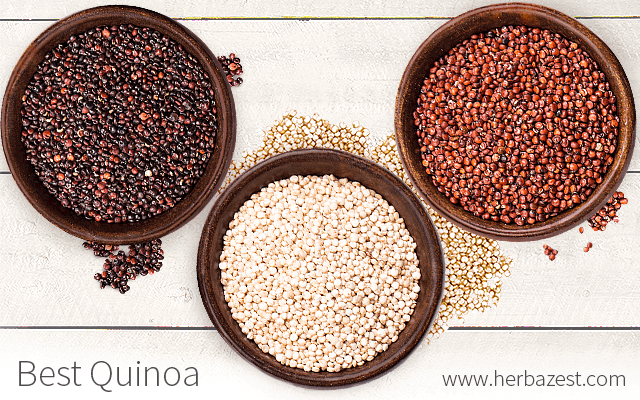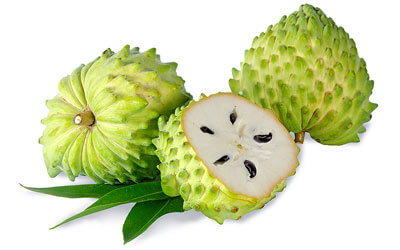While there are approximately 250 varieties of quinoa in almost every color, the most common ones are white, red, and black.1 But which type of quinoa is best? That will depend on availability, price, and intended use.
Best Quinoa for Nutrition
In terms of nutrition, white, red, and black quinoa are virtually identical. All three are considered good sources of complete protein because they contain all nine essential amino acids. What's unique about quinoa is that it contains high levels of lysine, an amino acid that is low in most grains.
THE BIOLOGICAL VALUE OF QUINOA'S PROTEIN IS 73%, COMPARABLE TO BEEF AT 74% AND MUCH HIGHER THAN THAT OF WHEAT (49%) AND CORN (36%).
But besides protein, all three varieties of quinoa are great sources of dietary fiber, unsaturated fat, and essential vitamins and minerals, including vitamin B9 (folic acid), calcium, and magnesium.
Best Quinoa for Weight Loss
All three varieties of quinoa rank low on the glycemic index (GI) at 35 - 53, depending on the cooking time. The GI ranks carbohydrates based on their impact on blood sugar levels. Low-GI diets are thought to reduce the risk of cardiovascular diseases, diabetes, and other serious health conditions. Additionally, low-GI diets have been demonstrated to improve glucose and lipid levels, ultimately helping to control weight. With that in mind, eating quinoa as part of a healthy diet may contribute to weight management.
THE DARKER QUINOA SEEDS ARE, THE HIGHER PHENOLIC CONCENTRATION AND ANTIOXIDANT ACTIVITY THEY HAVE.
If your goal is to lose weight, eating black quinoa can be more effective than eating white or red quinoa. Betacyanins, the pigments that give its color to black quinoa, also boost its antioxidant activity, which makes it effective against oxidative stress - the harmful activity of free radicals in the body. Oxidative stress has been linked to many serious health conditions, including diabetes and obesity. In that way, black quinoa is best for weight loss.
Choosing the Best Quinoa for You
White quinoa is the most widely-available variety of quinoa. It has a mild, nutty flavor as well as a delicate, fluffy texture. In addition, white quinoa is typically stickier and works well in recipes that require quinoa to hold different shapes. White quinoa is also the cheapest variety, which might be a good option for those on a budget.
WHITE QUINOA IS BETTER THAN OTHER VARIETIES WHEN USED AS A STAND-IN FOR RICE.
Red quinoa has a nuttier taste and crunchier texture than white quinoa. Red quinoa is slightly more expensive than white quinoa and more difficult to find in supermarkets. However, if you are looking to add a splash of color to your meal, red quinoa is the best option.
WHEN COOKED, RED QUINOA IS LESS STICKY THAN WHITE QUINOA, MAKING IT AN IDEAL INGREDIENT FOR SALADS AND DISHES THAT REQUIRE A GRAINY TEXTURE.
Black quinoa is the hardest to find and also the most expensive variety of quinoa, though it can add a dramatic element of color to many dishes. Black quinoa is crunchier than red quinoa and has a stronger taste that can be described as sweet but earthy. Like red quinoa, black quinoa is not very sticky and, therefore, best used in salads and dishes that require a grainy texture.
Choosing the best quinoa for you will depend on availability, price, and intended use. While all three varieties offer the same excellent nutritional value, there are subtle differences that can make a great statement if used properly.
Sources
- Food and Nutrition Sciences, Total Phenolic Content and Antioxidant Activity of Red and Yellow Quinoa (Chenopodium quinoa Willd.) Seeds as Affected by Baking and Cooking Conditions, 2012
- Food Chemistry, Characterisation of phenolics, betanins and antioxidant activities in seeds of three Chenopodium quinoa Willd. genotypes, 2015
- International Journal of Molecular Sciences, Inflammation, Oxidative Stress, and Obesity, 2011
- Journal of Nutrition and Food Sciences, Quinoa (Chenopodium quinoa Willd), from Nutritional Value to Potential Health Benefits: An Integrative Review, 2016
- Metabolism, What is oxidative stress? 2000
- Quinoa: The Everyday Superfood
- The American Journal of Gastroenterology, Gastrointestinal Effects of Eating Quinoa (Chenopodium quinoa Willd.) in Celiac Patients, 2014
Footnotes:
- Journal of Ecological Engineering. (2022). Seed Quality and Protein Classification of Some Quinoa Varieties. Retrieved May 2, 2022 from http://www.jeeng.net/Seed-Quality-and-Protein-Classification-of-Some-Quinoa-Varieties,143866,0,2.html




